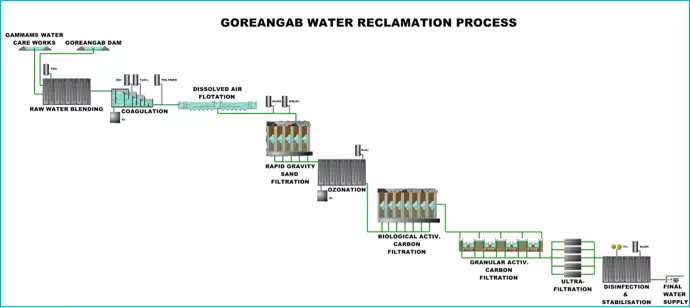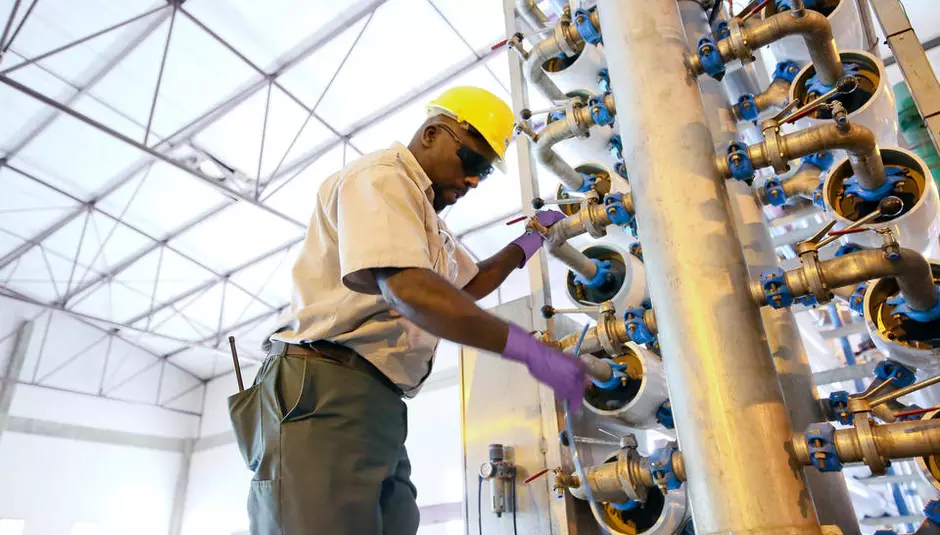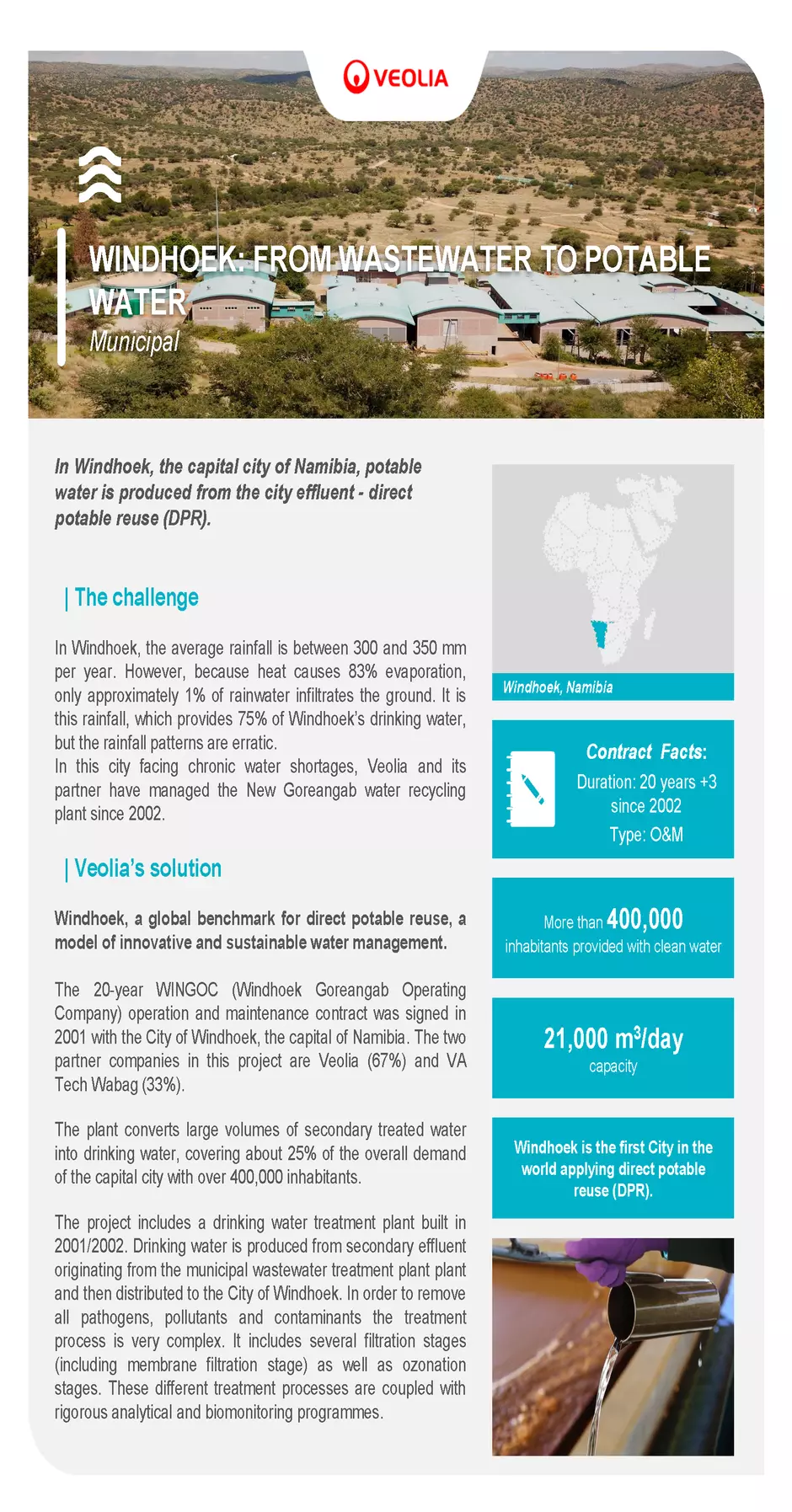In Windhoek, the capital city of Namibia, potable water is produced from the city effluent - direct potable reuse (DPR).
The challenge
In Windhoek, the average rainfall is between 300 and 350 mm per year. However, because heat causes 83% evaporation, only approximately 1% of rainwater infiltrates the ground. It is this rainfall, which provides 75% of Windhoek’s drinking water, but the rainfall patterns are erratic.
In this city facing chronic water shortages, Veolia and its partner have managed the New Goreangab water recycling plant since 2002.
Veolia’s solution
Windhoek, a global benchmark for direct potable reuse, a model of innovative and sustainable water management.
The 20-year WINGOC (Windhoek Goreangab Operating Company) operation and maintenance contract was signed in 2001 with the City of Windhoek, the capital of Namibia. The two partner companies in this project are Veolia (67%) and VA Tech Wabag (33%).
The plant converts large volumes of secondary treated water into drinking water, covering about 25% of the overall demand of the capital city with over 400,000 inhabitants.
The project includes a drinking water treatment plant built in 2001/2002. Drinking water is produced from secondary effluent originating from the municipal wastewater treatment plant plant and then distributed to the City of Windhoek. In order to remove all pathogens, pollutants and contaminants the treatment process is very complex. It includes several filtration stages (including membrane filtration stage) as well as ozonation stages. These different treatment processes are coupled with rigorous analytical and biomonitoring programmes.

This multi-barrier process is a world reference, as the City of Windhoek was a pioneer in producing potable water directly from municipal effluent. Even today, the Goreangab Water Reclamation plant remains the largest plant in operations for DPR and an inspiration for many water professionals.
The benefits
- Contribution to sustainable water supply of the city's population in a context of strong urban growth.
- The produced water is of high quality, it complies with the Namibian Water guidelines and the much stricter contractual limits agreed between Wingoc and the City of Windhoek.
- Water reuse increases the amount of drinking water available and avoids the need to draw on natural resources while also significantly reducing the release of pollutants to the environment.
- The cost of recycled water in Windhoek is always lower than the cost of transporting water from distant sources (Okavango River or desalinated seawater from the Atlantic Ocean).
- Windhoek is one of the very few cities in the world to apply direct potable reuse, and still the only one to do so on this scale.
SOCIAL
- Supply of approximately 25% of the water demand of the City of Windhoek.
- Employment of local staff. 23/24 are Namibians.
- Program to help employees' children pursue higher education, funded by Wingoc. 8 children since its launch and 2 have graduated.
COMMERCIAL
- Providing reliable, safe and cost-effective water.
- Innovative and sustainable water management.
- Contribution to the economic and social progress of the country.
ENVIRONMENTAL
- Protecting limited resources.
HUMAN RESOURCES
- Transferring skills to local staff.
- In 20 years, more than 20 degrees and training certificates were delivered.




